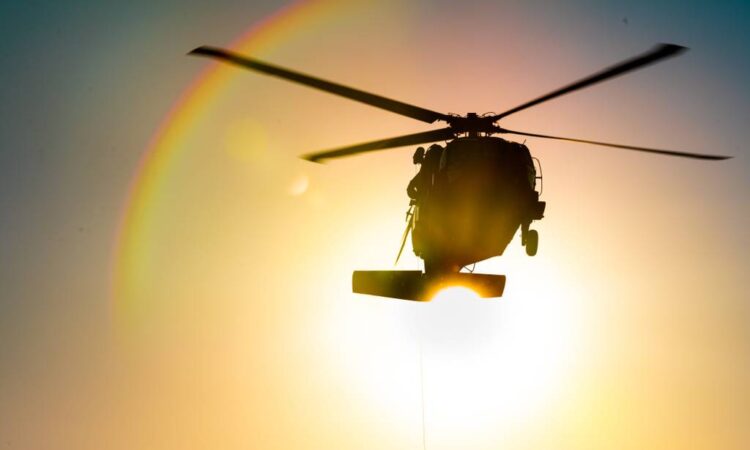
WASHINGTON — The U.S. Army is readying to trim its UH-60 Black Hawk utility helicopter fleet by nearly 8% as it prepares to field a replacement, Maj. Gen. Mac McCurry, the Army’s Aviation Center of Excellence commander, told Defense News in a recent interview.
The service plans to cut roughly 157 Black Hawks, or 7.5% of its total utility fleet, from its active-duty component. McCurry said the move is intended to help the Army optimize its current fleet while making room in the budget for the Black Hawk’s replacement, the Future Long-Range Assault Aircraft, or FLRAA, that will begin fielding in the early 2030s.
A year ago, the Army chose Textron-Bell’s V-280 Valor tiltrotor aircraft to replace the 40-year-old Sikorsky-manufactured UH-60. The Army also has plans to replace the Boeing-made AH-64 Apache attack helicopter with the Future Attack Reconnaissance Aircraft. Two companies are building competitive demonstrator aircraft.
“It’s really about balancing the current readiness with the procurement and fielding in the future,” McCurry said. “As we looked at our utility fleet specifically, we had grown that fleet since early in the 2000s by over 300 aircraft.”
That growth kept pace with the Army’s higher end strength during continuous rotations in Iraq and Afghanistan. The Black Hawk fleet in the fiscal 2004 timeframe consisted of 1,806 aircraft, but rose to 2,135 aircraft during counterinsurgency operations.
Today, with a smaller force, the service doesn’t need to keep all of those helicopters in service, he said. The total will now drop to 1,978 aircraft.
RELATED
:quality(70)/cloudfront-us-east-1.images.arcpublishing.com/archetype/DE3SVRLIDRHXXHRGXF2LVN5T2M.jpg)
The Army will only be removing the oldest aircraft — a few Alpha models and the rest Lima models — from the active component. Those aircraft will not come from units actively deploying or preparing to deploy, but from what the service calls “operational readiness floats,” McCurry said.
By targeting these aircraft, he added, the service reduces the overall fleet age, lowering long-term maintenance requirements, including mitigating “some critical parts challenges.”
The Army plans to sell the divested Black Hawks either through Foreign Military Sales transactions or through an exchange and sales program, McCurry said. Each aircraft is expected to fetch roughly $2 million.
When the aircraft will be taken out of the fleet is not yet determined, McCurry said. Fleet managers between Program Executive Office Aviation and Army Aviation and Missile Command will assess the health of the fleet to determine which aircraft should move and when.
The Army remains committed to upgrading its Mike-model Black Hawks, the latest variant, McCurry said.
The service is also providing Victor models to the Army National Guard. Victor models are upgraded Lima-model helicopters with digital cockpits identical to the Mike model.
Black Hawks are also expected to get brand new engines through the Improved Turbine Engine Program, but the effort has been delayed due to technical and supply chain issues during engine development, testing and early production phases.
Meanwhile, the Army is planning to examine the size of the Boeing-manufactured CH-47 Chinook cargo fleet to ensure it also matches the service’s force structure and end strength, McCurry said.
AH-64 Apache attack helicopters will not get the same review at this time, he added, because “we have remained short of AH-64s with some recent losses and … we are still short AH-64s.”
Jen Judson is an award-winning journalist covering land warfare for Defense News. She has also worked for Politico and Inside Defense. She holds a Master of Science degree in journalism from Boston University and a Bachelor of Arts degree from Kenyon College.




